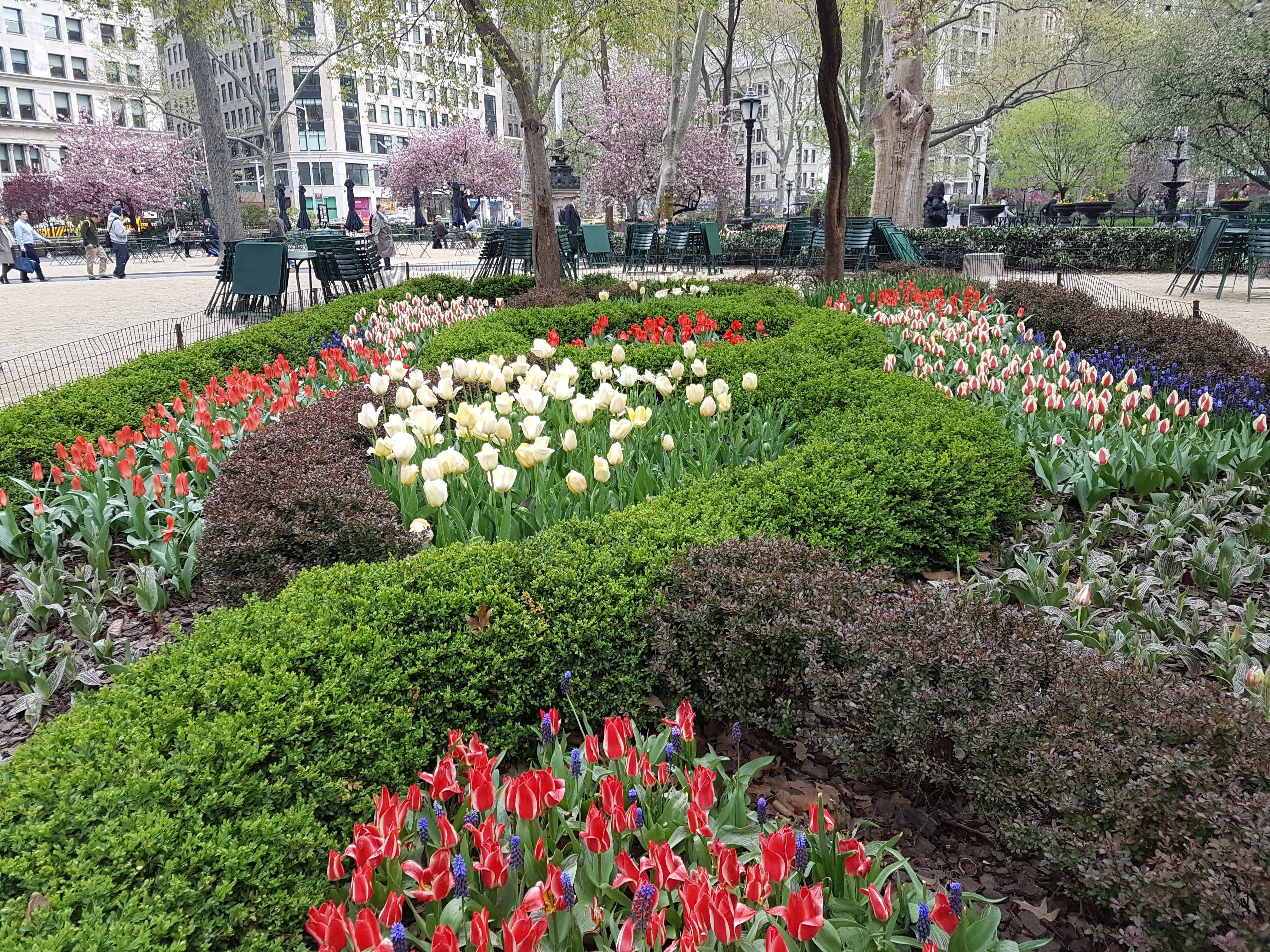This site uses cookies – Learn more.
Greening the Knot Garden
Greening the Knot Garden

In the early 2000s a new garden bed was introduced in the Park by renowned garden designer Lynden Miller. This new bed located in front of Shake Shack featured an evergreen understory of Japanese wintercreeper and a grove of red twig dogwood to provide year round interest and simplicity. An established small grove of downy hawthorn trees, Crataegus mollis also still exist today. While it is hard to pinpoint when these trees were planted, we know they were present on a 1964 survey of the Park and were later designated as part of a bird watching area. Prior surveys show other groves of trees here including Cornus mas.
In 2011, Japanese garden and blueberry patch was installed as a temporary garden to replace the prior planting. This garden was short lived as squirrels damaged the bark of many of the newly planted Japanese Maples within the first year. Squirrels will regularly gnaw on twigs to grind their teeth, which grow continuously throughout their lives. Maple sap can be sweet; they provide a candy-like treat for squirrels while they chew. Ultimately, the blueberry bushes were moved elsewhere in the Park to support bird populations while a more formal garden was installed.
In 2012, the bed was redesigned again to include a formal parterre composed of dwarf barberry and boxwood hedges. This planting was meant to be designed and supplemented with perennial grasses, however, they were never installed. Parterres originated in the gardens of the French renaissance of the 15th century and are often referred to as knot gardens. The greatest example of this style of gardening can be found in the Palace of Versailles.
This fall, the additional perennial material will finally be installed in the garden with a new understory plant pallet in cool blue and purple shades. Native plants such as creeping Jacob’s ladder (Polemonium reptans), foamflower (Tiarella cordifolia), creeping phlox (Phlox stolonifera), blue star (Amsonia ‘Blue Ice’), and wild petunia (Ruellia humilis) will help support native wildlife at Madison Square Park. Geranium ‘Lancastriense’ and Geranium ‘Rozanne’ will provide additional summer interest and durability. Carex ‘Eversheen’ and Helleborous ‘Snow Love’ will ensure that this garden looks green and blooming even in February when flowers bring hope for warm weather. Lastly a sprinkling of Allium christophii will provide a splash of spring architecture.
While annuals bring summer interest, perennial plants can bring interest all year long if well designed. Perennial plantings thrive for years, saving the effort of labor and the environmental impact of transportation of growing a new crop year after year. Perennial plants also reduce the water impact of Madison Square Park’s gardens as perennial plants require less water than annuals after their first year of establishment. These new plants should provide year long interest for years to come.



